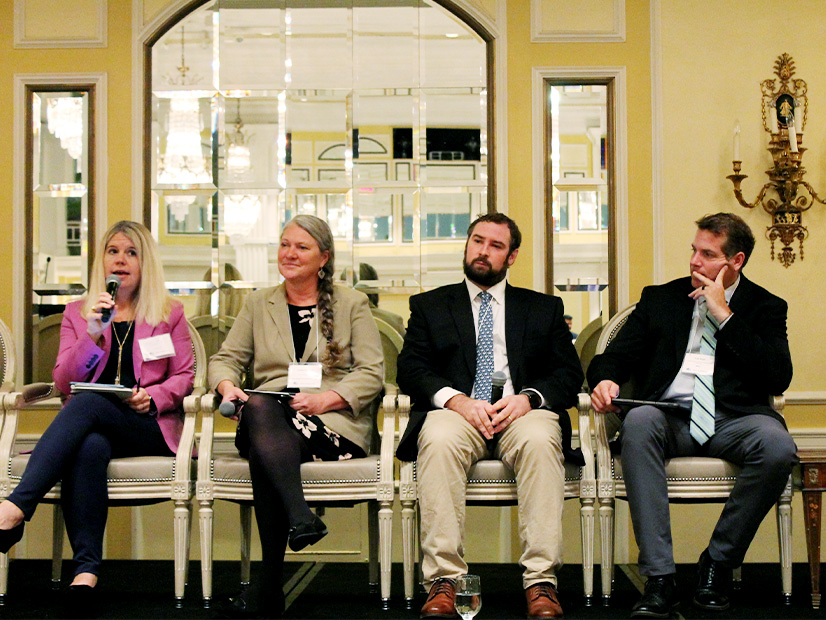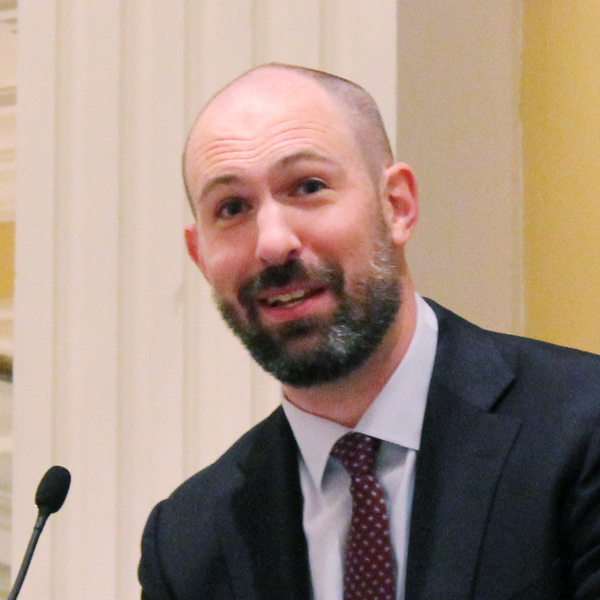
WASHINGTON — Transmission stakeholders and federal regulators are concerned about extreme weather and clogged generator interconnection queues, but they’re also encouraged by FERC’s many proposed rulemakings to tackle those issues.
“We’ve probably had more headlines this year in MISO related to resource adequacy and the threat of outages than we’ve had in the last five years combined,” Scott Wright, the RTO’s executive director of resource adequacy and resource utilization, said at WIRES’ annual Fall Conference on Thursday. “The risk profile of the grid is changing significantly.”
Variability and uncertainty have always been a part of managing the grid, he said, but both have increased significantly and faster than expected. “So all of our thoughts and plans at MISO had to be reprioritized and changed.”
The two are related in a way: States are seeking to interconnect more renewables to address climate change, which is increasing the frequency of extreme weather events.
 Eric Vandenberg, FERC | © RTO Insider LLC
Eric Vandenberg, FERC | © RTO Insider LLC
Eric Vandenberg — recently appointed deputy director of FERC’s Office of Electric Reliability, after serving as deputy director of the Office of Energy Policy and Innovation (OEPI) — gave a keynote speech focused on the threat of extreme weather. He stood in for Commissioner Willie Phillips, who could not attend because of a death in family, according to WIRES.
Vandenberg noted that several regions have come to the brink of load shedding just this year, including an early cold snap in MISO and an extended heat wave in California. “Looking forward, ‘extreme’ does not necessarily mean ‘rare,’” he warned.
Since the beginning of the year, FERC has issued several Notices of Proposed Rulemakings on transmission, including one on planning processes and cost allocation (RM21-17), and one addressing interconnection queues (RM22-14). Both came as a result of a wide-ranging Advance NOPR issued last year, the results of which the attendees of last year’s conference were eagerly anticipating. (See Transmission Industry Hoping for Landmark Order(s) out of FERC ANOPR.)
But FERC also issued proposed rules that would update NERC reliability standards and direct transmission providers to report on their policies for assessing their vulnerabilities to extreme weather. (See FERC Approves Extreme Weather Assessment NOPRs.)
Vandenberg said the NOPRs are designed “to raise that floor” of NERC’s standards “for instances of extreme weather” by making utilities address their vulnerabilities.
Meanwhile, “I don’t need to harp on the need for reform here with this audience; I think it’s pretty obvious to everyone that the interconnection queues are generally pretty backlogged,” said Tristan Kessler, an economist in OEPI. He noted the record number of projects submitted to MISO for interconnection just this year. (See MISO: Record 1,000 Interconnection Requests in 2022.) “So I’m excited to be at your fall 2032 panel to talk about interconnection issues as well.”
Amanda Conner, vice president of FERC and RTO strategy and policy at American Electric Power, asked Wright, Kessler and fellow panelist Cynthia Bothwell, an engineer in the Department of Energy’s Wind Energy Technology Office, whether the commission’s proposal goes far enough.
FERC’s proposed rulemaking on queues would create a first-ready, first-served model for interconnection, which has won wide support. But it would also impose stricter requirements on transmission providers in the form of penalties for failing to meet certain deadlines on completing interconnection studies; RTOs and utilities have not been particularly receptive to these.
Wright said “many things in the NOPR are spot-on,” but some “may not help with efficiency or may cause unnecessary work. … Is FERC going far enough? Well, they certainly proposed things related to very definitive penalties [to which] we would say, ‘Don’t go farther.’”
Bothwell answered that FERC “is doing a great job of getting that conversation going, but we know that the system is changing, and to get to this big transformation, it’s going to happen in steps. And we’re going to learn more … and need additional reforms down the road.”
“It’s definitely not the end of the process for us,” Wright said. “A lot of transmission providers have come to us and proposed other changes … and I think the commission is generally supportive of that.”


